First Static Dissipater
- Published: December 23, 2012, By Kelly Robinson
Why was the first static dissipater needed? And, who was the inventor?
Two industries drove the development of static dissipaters; printing and textile manufacturing. High speed printing on a continuous web was enabled by the rotary printing press. In 1847, Richard March Hoe patented an improved rotary drum printing press (US Patent 5,199).
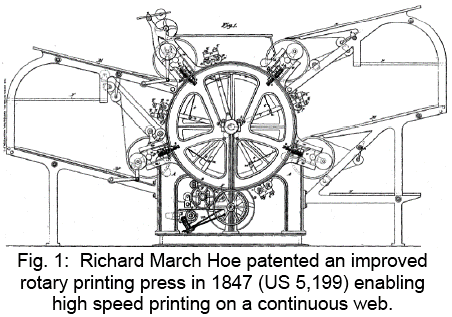
It took nearly 60 year for static to grow from merely a nuisance into a problem that required a solution. Several early pioneers built the foundation for modern static control.
A prolific inventor opened the modern age of static control for roll-to-roll operations. The first static dissipater was patented in June 1906 by William Henry Chapman of the Chapman Electric Neutralizer Company, Portland, Maine (US 824,339). His device had two wires, one positive and one negative, powered by a Wimshurst machine, an early static generator.
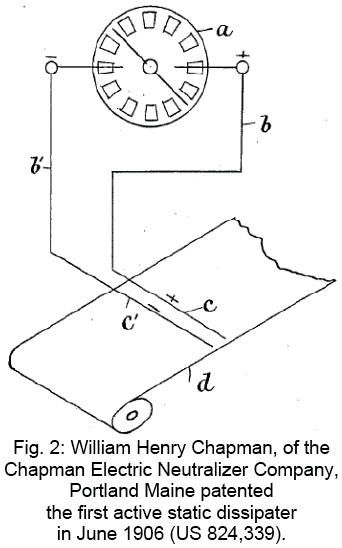
The first passive static dissipater was patented by William L. Hardwicke, Richmond, Virginia in November 1906 (US 836,576). His design of an array of grounded pins is still widely used today.
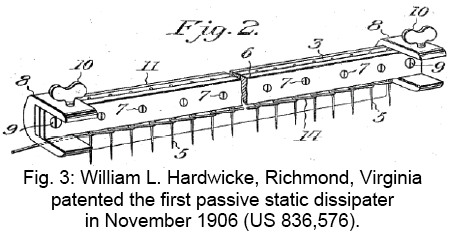
William Chapman proved to be a prolific inventor. In November 1909, he patented the first grid controlled corona ionizer (US 940,429). Grid controlled ionizers are still used for some coating applications requiring excellent static control and in imaging applications such as copiers and laser printers.
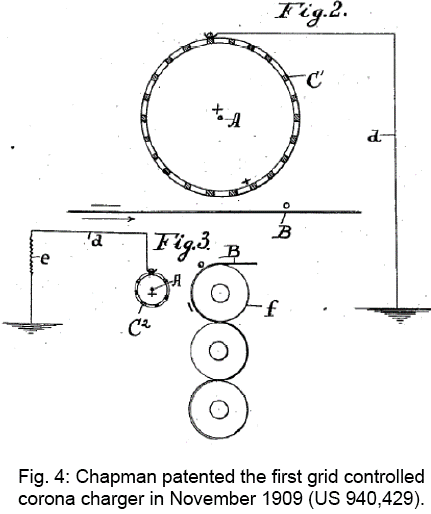
And, Chapman patented the first shockless static bar (US 940,431) in November 1909. His invention was to capacitively couple the pins of the static bar with the AC voltage source. This effective design is still used today in some shockless static bars.
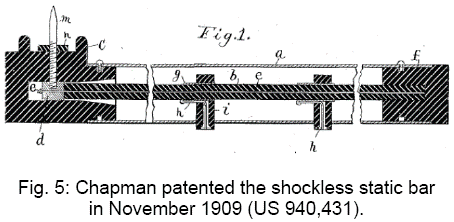
In another visionary invention, John S. Thompson, Chicago, Illinois in December 1914 patented the first static dissipater instrumented to indicate activity using a spark gap. He connected a passive static brush to a capacitor that stored electrical charge. The voltage on the capacitor increased as the brush dissipated static. A spark across an air gap indicated activity when the voltage reached the necessary, high level.
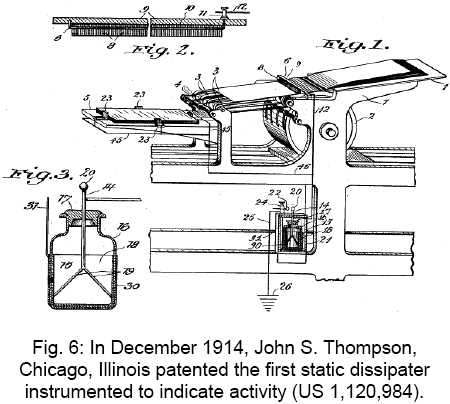
I invite you to share your comments on this blog below. And, please feel free to suggest topics for future blogs.
My email address is:
This email address is being protected from spambots. You need JavaScript enabled to view it.
Please feel free to visit my website:




